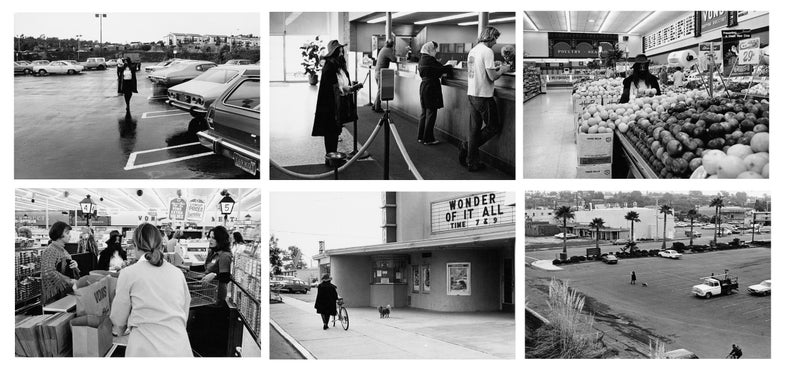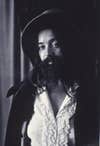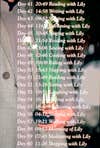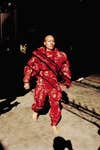Barnes Exhibition Takes Art to the Streets of Philadelphia
Daring Philly show stars the performance and photo-based art work of artists such as Marina Abramovic, Sophie Calle, and Ed Ruscha


The idea of the flâneur—or wanderer—came to us first by way of Edgar Allen Poe, who introduced the archetypal figure in his 1840 story “The Man of the Crowd.” Charles Baudelaire recognized him soon after as a driving force of urban art and life. His role (and until the second half of the 20th century it was, yes, always a white man) was to roam the streets—first of London and Paris, later to cultural centers like Berlin and New York—and record his impressions. Over time the flâneur became both observer and observed, and flânerie evolved into spontaneous acts of public art making. Now the Barnes Foundation in Philadelphia explores this notion with Person of the Crowd: The Contemporary Art of Flânerie.

The ambitious show starts in the museum’s temporary exhibition space with new and historical works by Eleanor Antin, Marina Abramović, Ayana Evans, Tania Bruguera, Keith Haring, Allan Kaprow, Robert Rauschenberg, Gillian Wearing, David Wojnarowicz, and many others.

While few flâneurs have called themselves primarily photographers, most of these artists rely on photography to some degree. Some are performance artists who document their projects with photographs along with text, video, and other media; notable photo-centric artists in this show include Sophie Calle, Marina Abramovic, Ed Ruscha, and Martha Rosler. But it’s not a stretch to say that as the camera became more portable and technology placed expressive authority literally in almost everyone’s hands, the flâneur has morphed into the street photographer.

“The energy [of the flâneur] doesn’t disappear—it gets funneled into street photography,” says Thom Collins, the Barnes’s executive director and president and the exhibition’s curator. “We talk about [street photography] in terms of form, but it’s social engagement.” Though typically receded into the shadows, the street photographer is still very much a participant in her surroundings and in her art making.

Apropos of the genre, much of the show takes place outside the gallery’s walls, in the streets of Philadelphia. Commissioned performances, billboards, and other projects by the likes of Sanford Biggers, Zachary Fabri, and Christy Rupp will appear throughout the city during the run of the show through May 22.
The exhibition’s conceit also spills over into the social realm, pointing toward a postmodern flânerie by inviting the public to share their experiences of the work on social media using text, audio, video, or photos along with the hashtag #personofthecrowd.

“People argue that the flâneur went into cyberspace. The actual act of having surprise novel engagements with the world is something we do online now,” Collins says.
And yet the participatory, immersive aspect of Person of the Crowd signals a new way of presenting art that contemporary audiences expect—and it’s one that deeply validates the attitude and practice of the flâneur as central to our modern, connected, urban existence.

“What’s interesting is this idea that an experience isn’t complete until you’ve shared your own perspective on it or engaged other people in a conversation about it in media,” Collins adds. Still, the spontaneity, immediacy, and agency that are essential to flânerie are just as present in this exhibition: “Having people activated, experiencing parts of the city in new ways, will, I hope activate a different part of consciousness that I hope persists.”
Person of the Crowd: The Contemporary Art of Flânerie opens Saturday, February 25, and runs through May 22. Find the full exhibition schedule and info here.
